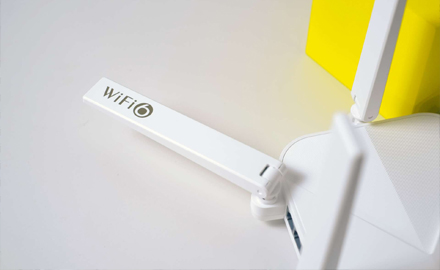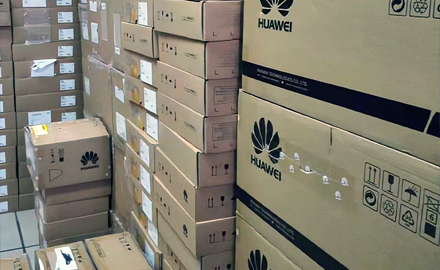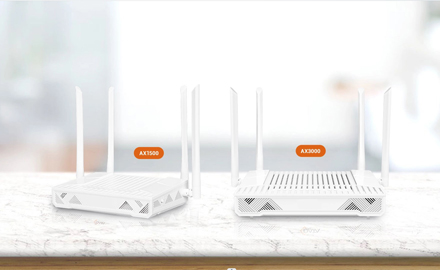The Optical Line Terminal (OLT) equipment room is a vital component in the deployment of Fiber to the Home (FTTH) or Fiber to the Building (FTTB) networks. Proper site selection principles and adherence to construction standards play a pivotal role in ensuring the efficiency, reliability, and longevity of the network infrastructure. This comprehensive guide explores the key considerations for site selection and construction standards for OLT equipment rooms, providing in-depth insights into creating a robust and sustainable foundation for advanced optical networks.
Site Selection Principles:
1. Accessibility:
Accessibility is a fundamental consideration in site selection for an OLT equipment room. The room should be strategically located to ensure ease of access for maintenance personnel and technicians. Ideally, it should be situated in a central location within the service area to minimize travel time for troubleshooting and routine maintenance tasks. The proximity of the OLT equipment room to other network components, such as distribution points and termination points, should be optimized to reduce latency and improve overall network performance.
2. Environmental Conditions:
Maintaining optimal environmental conditions within the OLT equipment room is crucial for the reliable operation of networking equipment. The room should be shielded from external environmental factors such as extreme temperatures, humidity, and dust. Adequate air conditioning and ventilation systems must be in place to regulate temperature and prevent overheating of sensitive optical equipment. Regular monitoring of environmental conditions should be established to ensure compliance with recommended operating parameters.
3. Security:
Security is paramount in protecting the OLT equipment room from unauthorized access and potential tampering. The selected site should allow for the implementation of stringent security measures, including access control systems, surveillance cameras, and intrusion detection systems. Physical barriers and restricted entry points must be in place to deter unauthorized personnel. Compliance with industry standards and local regulations related to data center security should be a top priority.
4. Proximity to Users:
Strategic placement of the OLT equipment room in close proximity to end-users can offer significant advantages. Minimizing the fiber length between the OLT and end-users helps mitigate signal attenuation, ensuring optimal signal quality and network performance. This proximity also facilitates more straightforward maintenance and troubleshooting activities, reducing response times in the event of network issues.
5. Space Requirements:
Adequate space within the OLT equipment room is essential to accommodate current equipment and allow for future expansions. The room layout should be designed with scalability in mind, ensuring that additional racks and equipment can be seamlessly integrated as network demand grows. Sufficient space should be allocated for proper cable management, equipment ventilation, and easy accessibility for maintenance personnel.
Construction Standards:
1. Flooring:
The flooring of the OLT equipment room should be carefully selected to meet the specific requirements of a telecommunications environment. Anti-static flooring is recommended to prevent electrostatic discharges that could potentially damage sensitive electronic equipment. The flooring material should also be durable and resistant to wear, providing a stable and safe working surface for technicians.
2. Ceiling and Lighting:
The installation of a false ceiling is a common practice in OLT equipment rooms. This feature not only conceals and organizes cabling but also provides space for the installation of additional infrastructure components. Adequate lighting is essential for visibility during maintenance and troubleshooting activities. Energy-efficient lighting fixtures with backup power sources should be employed to ensure continuous operation even during power outages.
3. Fire Suppression:
Safety measures, including effective fire suppression systems, must be in place to protect both personnel and equipment. The OLT equipment room should comply with local building codes and industry standards for fire safety. Fire-resistant construction materials, such as fire-rated walls and doors, contribute to containing potential fire incidents. Regular testing and maintenance of fire suppression systems are critical to ensuring their functionality in case of emergencies.
4. Grounding:
Proper grounding is essential to protect equipment from electrical surges and ensure the safety of personnel. The OLT equipment room should be equipped with a comprehensive grounding system that meets industry standards. Grounding should extend to racks, cabinets, and other metallic structures to create a low-resistance path for electrical currents. Regular inspections and maintenance of the grounding system are imperative to guarantee its effectiveness over time.
5. Rack Installation:
Rack installation in the OLT equipment room requires careful planning to optimize space utilization, heat dissipation, and ease of equipment access. Racks should be arranged with adequate spacing to allow for proper airflow and prevent equipment overheating. Securing racks to the floor ensures stability and minimizes the risk of vibrations that could impact equipment performance. Additionally, cable management within racks should be organized and labeled for easy identification and maintenance.
6. Power Supply:
A reliable and stable power supply is critical for the continuous operation of the OLT equipment room. Uninterruptible Power Supply (UPS) systems should be installed to provide backup power during electrical outages, preventing service disruptions. Power distribution units (PDUs) enable efficient power management and distribution to individual equipment components. Regular testing of UPS systems and PDUs is essential to ensure their readiness in emergency situations.
7. Cable Management:
Effective cable management is integral to maintaining an organized and efficient OLT equipment room. Cable trays, conduits, and racks should be employed to route and organize cables systematically. Proper labeling of cables enhances visibility and simplifies troubleshooting and maintenance tasks. Regular audits of cable installations help identify and address any issues, ensuring the integrity and reliability of the network.
8. Compliance with Standards:
Adherence to industry standards and local regulations is non-negotiable when designing and constructing OLT equipment rooms. Building codes, electrical standards, and telecommunications regulations should be thoroughly researched and incorporated into the design and construction processes. Collaboration with regulatory authorities and third-party certification agencies can provide additional assurance of compliance.
9. Documentation:
Comprehensive documentation is a critical aspect of OLT equipment room construction. Detailed records should be maintained, including floor plans, equipment specifications, wiring diagrams, and any modifications made to the room. This documentation serves as a valuable resource for maintenance personnel, facilitating efficient troubleshooting and future upgrades. Regular updates to documentation ensure accuracy and relevance as the network evolves.
Conclusion:
In conclusion, the site selection principles and construction standards for OLT equipment rooms are multifaceted, requiring careful consideration of various factors to create a robust and sustainable networking infrastructure. The strategic selection of the equipment room site, coupled with adherence to construction standards, contributes to the overall reliability, security, and performance of fiber optic networks. As technology continues to advance, ongoing monitoring, maintenance, and upgrades will be essential to keep OLT equipment rooms at the forefront of telecommunications innovation.
 The Difference Between AX1800 ONU and AX3000 ONU
The Difference Between AX1800 ONU and AX3000 ONU
 How are Huawei OLTs Classified?
How are Huawei OLTs Classified?
 The Future Trend of Optical Line Terminals (OLTs)
The Future Trend of Optical Line Terminals (OLTs)
 The Difference Between ONU and ONT
The Difference Between ONU and ONT